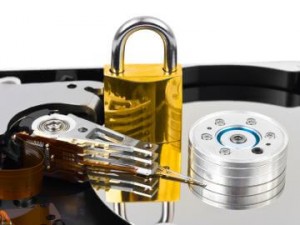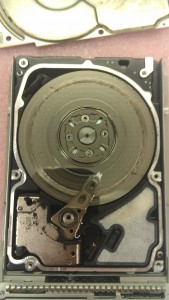 In our work, we frequently encounter widespread misconceptions about data loss. Most of these myths originate from misunderstandings of how hard drives, solid-state drives, RAID arrays, and other devices function. For the most part, they’re harmless, but our goal is to help spread knowledge about the capabilities — and limits — of data recovery science. With that in mind, let’s look at a few of the most common examples.
In our work, we frequently encounter widespread misconceptions about data loss. Most of these myths originate from misunderstandings of how hard drives, solid-state drives, RAID arrays, and other devices function. For the most part, they’re harmless, but our goal is to help spread knowledge about the capabilities — and limits — of data recovery science. With that in mind, let’s look at a few of the most common examples.
1. Myth: Solid-state drives are much more reliable than hard drives. Solid-state drives have no moving parts, and as such, they’re less susceptible to direct physical damage. They’re arguably more reliable, but that depends on a number of factors, including the user’s data storage habits and the SSD’s garbage collection method.
Any digital storage device can fail — and eventually, all devices will fail. Solid-state drives are often more susceptible to data corruption than hard drives, and they’re certainly more susceptible to certain types of user-error data loss. The takeaway: If you have important data, make sure it exists on at least two distinct physical devices. An easy way to do this is to use a cloud backup service.
2. Myth: You can recover data from a hard drive by putting it in a freezer. This is, somehow, the single most prevalent data recovery myth. We hate it (and if you worked at a data recovery company, you would, too).
Here’s the idea: Many hard drive failures are caused by seized read/write heads. By freezing a hard drive, you can un-stick the heads, then quickly copy off the data before the hard drive returns to room temperature.
In the early days, this wasn’t such an outlandish concept. In the late 1990s, many data recovery laboratories had specialized freezers for cooling down hard drives, but these days, we only use our freezers to store our (terrible) microwave burritos. Hard drive densities have expanded considerably since the 1990s, and read/write head technology has progressed. These days, freezing a hard drive will almost certainly cause additional serious issues that negatively affect the recovery prognosis.
Additionally, people who try the “freezer trick” usually don’t have access to specialized coolers designed for the purpose. By putting their drives into freezers, they expose their devices to moisture, which, as you might expect, causes issues when the drive’s temperature drops below freezing. We’ve seen printed circuit board damage and a host of other issues.
If you have a hard drive that shows signs of physical damage, don’t turn it on, and never put it in a freezer (or an oven, or a microwave, or any other device designed for food, for that matter). Get it to a data recovery company.
3. Myth: The U.S. government has data recovery technologies that far exceed those of the private sector. We don’t have access to federal facilities, and we’re sure that they’ve got some excellent tools, but we often receive cases from government institutions, including investigative offices like the New York City Police Department, the US Army, and NASA.
Government offices use data recovery companies for the same reason you do: We’re really good at what we do. We spend most of our resources on research and development, and each of our laboratories utilizes millions of dollars in tech.
The vast majority of new advances in data recovery technology come from the private sector. When you send your media to a company like Datarecovery.com, you get the best possible chances of a successful case outcome — regardless of the size of your case or the exact nature of your data loss.
4. Myth: When data has been deleted, it’s gone forever. The accuracy of this statement depends on the operating system, file system, and media type, but generally speaking, deleted files are recoverable.
When you delete a file from a hard drive, the drive simply marks the space as available. When the drive needs to write more data, it will write over that “available” space, permanently eliminating the deleted file. Therefore, if you’ve accidentally deleted an important file, your best bet is to unplug your computer immediately and get the drive to a data recovery company.
Data recovery software can also be effective, but we have to make this point clear: Make sure you know what you’re doing. We regularly receive cases where customers accidentally overwrote data while trying to run data recovery software.
When files are deleted from solid-state drives, they’re typically gone, but again, there are other factors that can allow for a more positive data recovery prognosis. If you delete files from an SSD, turn it off immediately and give us a call to discuss options.
5. Myth: I can use data recovery software at home to recover just about anything. If you run data recovery software on a physically damaged device, you will cause damage that could prevent a full recovery.
To stress that point, we’ve included a photo of a customer hard drive that sustained damage by running in a failed state.
 See those rings? Those are missing magnetic material, physically scraped away by the read/write heads. When that occurs, the data is removed from the disk forever, and no data recovery technique can restore the affected files to a usable state.
See those rings? Those are missing magnetic material, physically scraped away by the read/write heads. When that occurs, the data is removed from the disk forever, and no data recovery technique can restore the affected files to a usable state.
We should note here that some physical hard drive failures don’t have obvious symptoms. Some customers run software on their drives after receiving “file corruption” errors, believing that software issues are preventing the data from being accessed normally. That may or may not be the case — and if the user is wrong, the software can do quite a bit of damage.
6. Myth: Data recovery companies repair hard drives. In a sense, data recovery technicians do repair hard drives, temporarily, in certain circumstances. We replace damaged components and bring the drive in question to a partially functional state.
The key word there is “partially.” A hard failure greatly affects a drive’s functionality, so the drive rarely “just works,” and that’s why we can’t return a customer’s hard drive in a perfectly functional state (instead, we copy their data onto the return media of their choice).
7. Myth: A RAID with sufficient redundancy is just as effective as a good backup policy. RAID (Redundant Array of Inexpensive Disks, or, alternately, a Redundant Array of Independent Disks) allows multiple devices to work in tandem, allowing for faster data access speeds and greater protection against downtime. Most servers use some form of RAID to ensure that a single hard drive failure doesn’t impact a mission-critical system.
RAID and similar multi-disk technologies can allow for virtually unlimited redundancy (the ability of a system to withstand hardware failures). However, there’s a great saying among IT professionals: RAID is not back up.
Arrays fail regularly, and when failures occur, the results can be catastrophic. Always back up RAID arrays — and any other mission-critical system — on a regular schedule.
We’ll continue to add to this page. If you have a topic you’d like us to cover on our blog, use our contact form to let us know, and if you’d like to speak with a specialist or get a quote for your data recovery case, give us a call at 1-800-237-4200.





